Content
The main goal of farmers is to obtain a good harvest. Its characteristics depend not only on the composition and fertility of the soil or the degree of care. The quality of the seed material is important to obtain a decent final result. Therefore, pre-sowing seed treatment against diseases and pests comes first. Recently, the fungicide “Benorad”, used for treating seeds, was registered in the Russian Federation. To appreciate all the benefits of the drug, you should read the instructions for using the Benorad systemic disinfectant and the video:
Description of the drug
"Benorad" belongs to the category of systemic fungicides and disinfectants for material for sowing or planting. It has another name - “Fundazol” or “Benomil”. In addition to the fungicide effect, the drug has not only an insecticidal but also an acaricidal effect, which manifests itself in suppressing the activity of aphids or spider mites. Main parameters:
- A drug based on Benomyl (Fundazol) has been created, the content of which is 500 g/kg.
- The Benorad fungicide is produced in the form of a wettable powder.
- Based on the method of penetration, the drug is classified as a contact and systemic pesticide, and based on the nature of its action, it is classified as a protective pesticide.
- The hazard class of "Benorad" for humans is 2, for bees - 3.
- The drug can be stored for two years. This is the time during which all the properties of Benorad are preserved.
Farmers use Benorad according to the instructions in different qualities. There are basically three directions:
- Seed protectant for the same type of crops (cereals). Provides protection to seeds from a whole range of diseases - several types of smut (hard, dusty, stem, stone, false (black)), mold, powdery mildew, fusarium and cercosporella rot.
- Systemic fungicide used during the growing season for cereals and sugar beets. The use of Benorad protects plants from many diseases, primarily from those listed in the previous paragraph. In addition to its high efficiency, the drug compares favorably with its price compared to similar products on the market.
- Fungicide for treating fruit, berry and vegetable crops.
According to the experience of farmers, the drug successfully works against powdery mildew on vegetables, oidium on grapes, various types of rot, mold on fruits or plants. At the same time, Benorad has a good period of protective action - 10-20 days, and a waiting period of 7-10 days.
In addition to the listed diseases, the Benorad fungicide effectively prevents the spread of pathogens of opheobolosis, snow mold, rhizoctonia, and beet blight.
The property of universal use for a wide range of plants distinguishes Benorad from other preparations of similar action.
Benefits of the fungicide
To evaluate the advantages of the drug "Benorad", it is enough to read its instructions for use. It describes the mechanism of action and properties of a unique fungicide, which is most valued by consumers:
- After finishing the fungicide treatment, the active substance quickly penetrates the plant and begins to suppress the development of fungal infection. Treating seeds disinfects seed material and prevents the occurrence of diseases. This effect is provided by benomyl (active ingredient), which has a systemic and contact effect.
- The action of benomyl is complex. It has different types of effects - systemic, destructive, preventive. When the substance interacts with the cells of pathogens, namely with their nuclear microtubules, the mycelium growth procedure is inhibited and blocked. Additionally, the process of formation of attachment organs of pathogenic fungi is reduced. Ultimately, their death occurs.
- When alternating “Benorad” with other types of drugs or making combinations with them, the phenomenon of resistance (resistance) of plants to its action does not arise.
- If you strictly adhere to the recommendations for the use of Benorad, you get a guaranteed effect in the fight against diseases.
Recommendations for use when treating seeds
For different crops, a certain rate of consumption of the fungicide working solution should be adhered to.
Therefore, it is convenient to use a visual table:
Name of culture | Dosage of the preparation for dressing (kg/g) | Types of diseases against which it is used |
Winter wheat | 2 — 3 | Smut. Suitable for destroying varieties - dusty, hard. There are two types of root rot - cercosporella and fusarium, as well as molding of seed material. |
Spring wheat | 2 — 3 | Against two types of smut - dusty and hard. Fusarium root rot. Seed molding. |
Spring barley | 2 — 3 | To combat smut (black, stone, dusty), fusarium root rot, molding of seeds. |
Winter rye |
| Stem smut, seed mold, snow mold, fusarium root rot |
Mid-season and late potato varieties | 0,5 — 1 | Rhizoctoniosis. |
The Benorad fungicide received excellent recommendations from farmers when used for treating conifers before planting and treating bulbous plants (seed material).
Application during the growing season
According to the instructions, the Benorad fungicide is used for grains and beets during the growing season.
Name of culture | Recommended dosage kg/g |
Winter wheat | 0,3 – 0,6 |
Spring wheat | 0,5 – 0,6 |
Winter rye | 0,3 – 0,6 |
Sugar beet | 0,6 – 0,8 |
During the growing season, the fungicide is used for vegetable, berry and fruit crops. In this case, it is necessary to adhere to the dosage and recommended number of treatments with the Benorad fungicide.
For cabbage, one treatment is enough. The fungicide works against clubroot. Dilute the drug in a ratio of 15 g per bucket of water (10 l). Water the soil before planting seedlings at the rate of 5 liters of working solution per 10 square meters. m area.
For berries (currants and gooseberries) you will need 2 treatments. A fungicide is used to prevent the development of powdery mildew. A solution is prepared from 10 g of the substance and 10 liters of water. Spray the bushes before flowering and after fruiting.
When planting strawberries, the same dosage is used. Number of treatments – 2 times. Spraying with Benorad is carried out against powdery mildew and gray rot at the same time - before flowering and after picking berries.
To protect fruit trees (pear and apple trees), you need to carry out at least 5 treatments.The fungicide works against powdery mildew, scab, oidium, gray rot. Prepare a solution from 10 liters of water and 10 g of the drug. The trees are sprayed for the first time before flowering. Young plants use 5 liters of solution, adults 10 liters.
For vegetables (cucumbers, tomatoes) and roses, Benorad is useful at the first signs of spotting and powdery mildew. 2 treatments with an interval of 14 days are sufficient. The solution is prepared from 10 g of the drug per 10 liters of water.
Application nuances
The Benorad fungicide has its own characteristics of action, so farmers need to familiarize themselves with them before using the drug.
The movement of matter through plants occurs only from bottom to top. When Benorad is used as a disinfectant, it shows maximum effectiveness. Moving from the root system to the top, benomyl works on all areas. When spraying, it is impossible to move the active substance from one leaf to another, so you should be very careful during the procedure. It is important to treat all leaves of the plant, both upper and lower.
The instructions for use of the Benorad fungicide indicate a hazard class that is considered to be of low toxicity for flora and fauna. It is not dangerous for bees, but the drug can be used near bodies of water no closer than 2 km.
Treating seeds in close proximity to water bodies is prohibited, but treated seed can be sown. Beekeepers are given the following recommendations:
- do not process plants when wind speeds exceed 5 m/s;
- choose a time for spraying when bees do not fly out of the hives (evening, cloudy or cool weather);
- maintain a border protection zone of 1-2 km before placing the apiary.
It is allowed to work with the drug only using personal protective equipment.
If signs of poisoning are detected, immediately take first aid measures and contact a medical facility. There are no antidotes for the fungicide, so symptomatic treatment is carried out.
It is permitted to transport the drug by any means of transport, subject to the rules for transporting dangerous goods. It is strictly prohibited to store and transport Benorad with feed or food products.
Scattered or spilled drug is disposed of.
The working composition is prepared before use. Place the required amount of the substance into a half dose of liquid, mix thoroughly, then add water to the full volume.
By following the recommendations, you can be confident in the results of treatments with the Benorad fungicide.
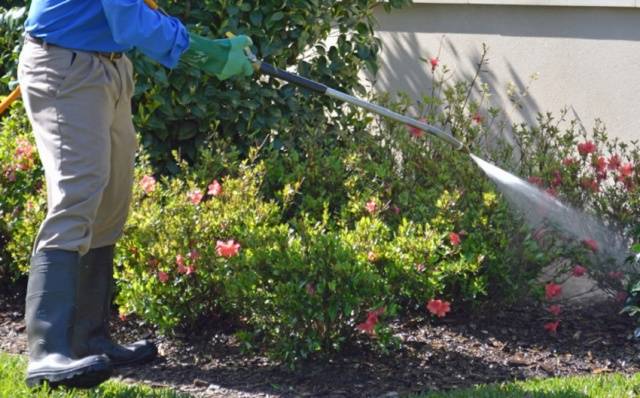
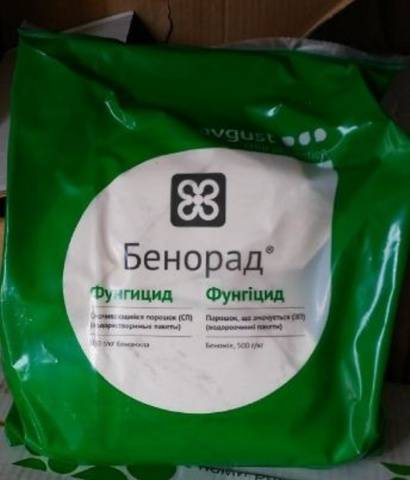
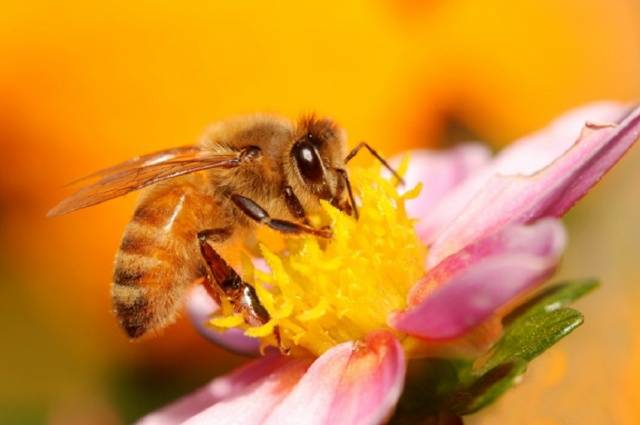
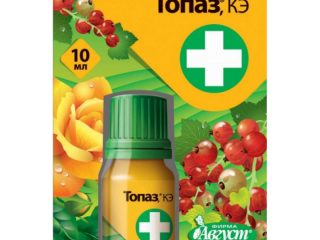
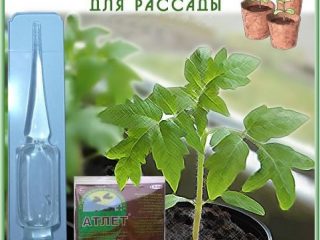

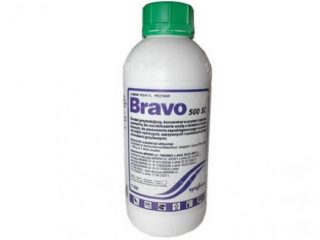

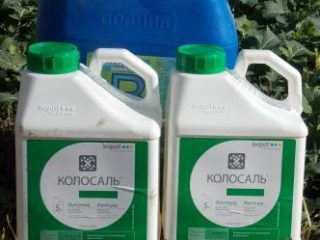
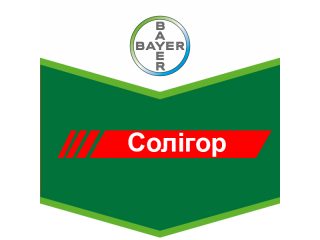
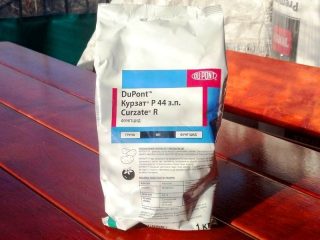
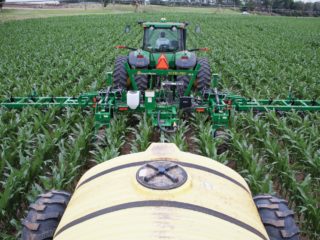
Quote from your article “In addition to the fungicide effect, the drug has not only an insecticidal but also an acaricidal effect, which manifests itself in suppressing the activity of aphids or spider mites. »
Dear “publishers”, before posting an article, take the trouble to check the authenticity of the information. Fungicides are drugs against fungal diseases, and are NEVER used against pests, for the reason that insecticides are drugs against harmful insects, and acaricides against arachnids. But gullible citizens, after reading your “article,” can use the above-described remedy against pests.
Good afternoon Thank you for your attention to the content of the article.We completely agree that the drug “Benorad” belongs to the fungicides - the intended purpose of which is to combat various types of fungal diseases.
But at the same time, a number of organic preparations, which include foundationazole (benomyl) - the active substance of Benorada, may also have insecticidal and acaricidal properties, which is, in particular, mentioned in literary sources. For example, Gruzdev, G.S. Chemical plant protection / Ed. G.S. Gruzdeva.- X 46 3rd ed., revised. and additional - M.: Agropromizdat, 1987.- 415 p.
It should be noted that this effect is a pleasant addition to the fungicidal properties, but is by no means fundamental.